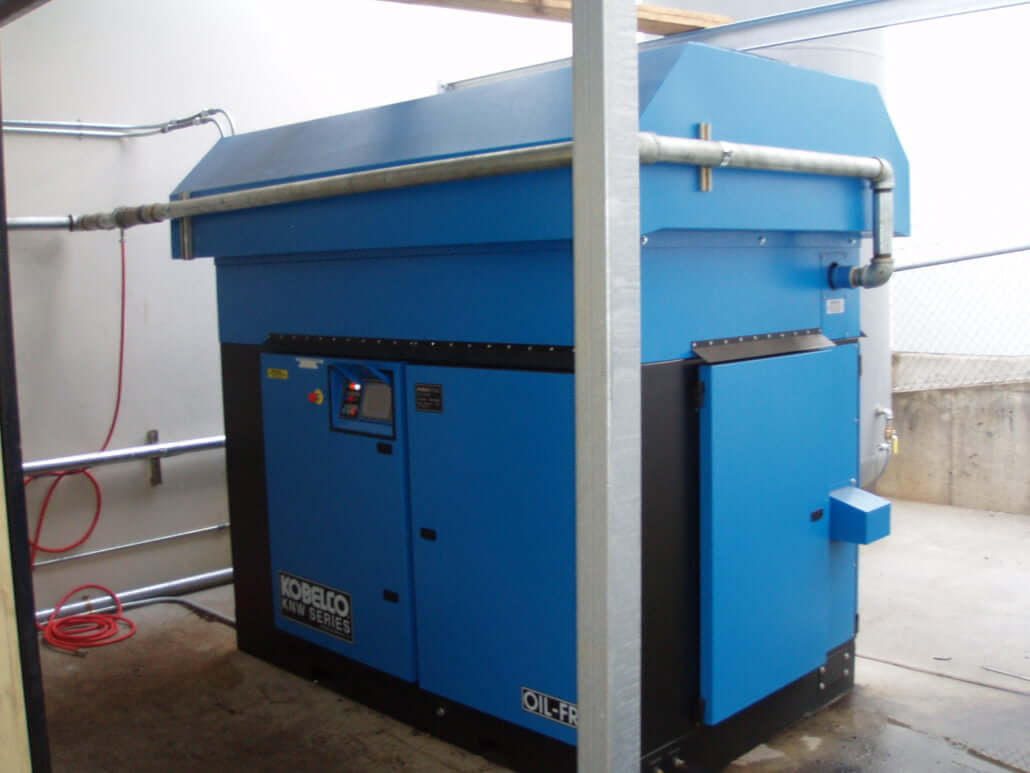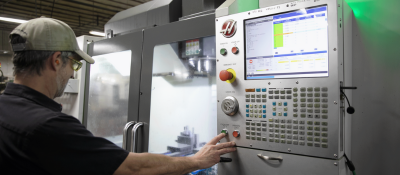Your Cart is Empty

Pacific Natural Foods Increases Air System Performance & Saves On Compressed Air System Energy Costs
Pacific Natural Foods was able to get energy savings of over 345,000 kWh annually, electrical cost savings of $23,000 annually and a simple payback of 2.5 years through the implementation of a reliable, clean compressed air system.
In February, 2009, Pacific Natural Foods of Oregon was preparing to undergo a large production upgrade and remodel of their Tualatin, Oregon facility. New process equipment was being moved, upgraded, and reorganized. The compressed air system came under scrutiny for the valuable production space it occupied in the plant and also for maintenance and reliability issues. Although compressed air demands were not expected to increase, it was determined an audit of the compressed air system would provide insight to improve the system and save energy.
Rogers Machinery Company, Inc. was selected to perform the energy audit of the existing baseline system. Data was collected during a typical two week period. The power (kW) consumed by each compressor as well as pressure (psig) at various locations were monitored through the plant.
The data showed significant pressure drop across the multiple buildings of the facility. The data also showed the existing compressors were not working together which caused erratic pressure fluctuations and maintenance issues.
While taking into account the requirements of Pacific Food Maintenance and Engineering staff, Rogers Machinery proposed an Energy Efficient Measure (EEM) to improve the compressed air system by reducing energy consumption while lowering and stabilizing plant pressure.
After the new system was properly installed and tuned, Rogers Machinery returned to verify the savings through the same process as before, by monitoring power consumed and pressure at the same locations.
- Energy savings of over 345,000 kWh annually
- Electrical cost savings of $23,000 annually
- Simple payback of 2.5 years
- Reliable, clean, dry compressed air
- Reduced plant pressure of 15 psig without affecting production
The decision to proceed with the project was based on several factors:
- Annual energy savings
- Implementation Costs
- Incentives
- Payback
Incentives provided by Energy Trust of Oregon were administered by Cascade Energy Engineering. At the time of this project’s implementation, Energy Trust paid $0.20 /kWh or 50% of the project cost, which ever is less.
The Oregon Department of Energy Business Energy Tax Credit program contribute 35% of the eligible project paid as tax rebates over 5 years or the tax credits can be sold through a third party for 25.5% cash.
The combination of the two lucrative incentive programs helped to provide the extra push to move the project forward.
Incentives provided approximately 70% of the eligible implementation costs which reduced the simple payback from 8.4 to 2.5 years. A return on investment upper management thought was worthy.
- Relocated the existing 125 hp VFD, two-stage, rotary screw, oil free air compressor and 2250 gallon receiver tank to the outdoor compressor area.
- Installed a new Kobelco KNW Series, 200 hp VFD, two-stage, rotary screw oil free air compressor in new outdoor compressor area.
- Consolidated compressed air dryers to one location.
- Installed three station, touch screen duty-sequencer and interface panels to allow the compressors to be started and stopped as needed to maintain stable plant pressure.
- Installed a new pipe header to better connect buildings to the system and remote tank to eliminate pressure drop





